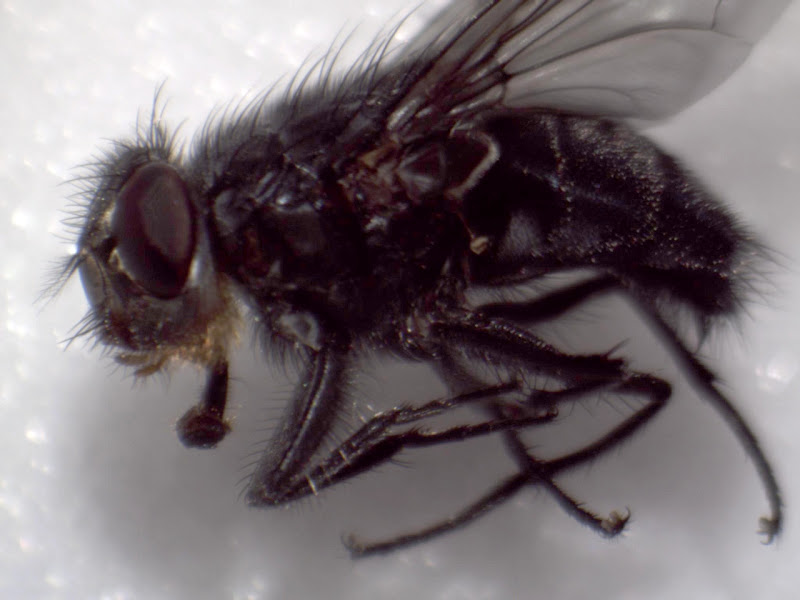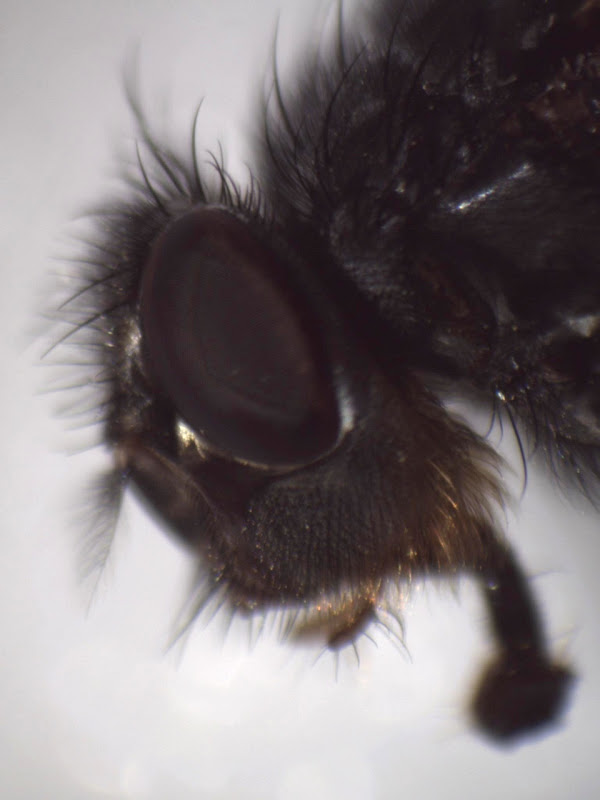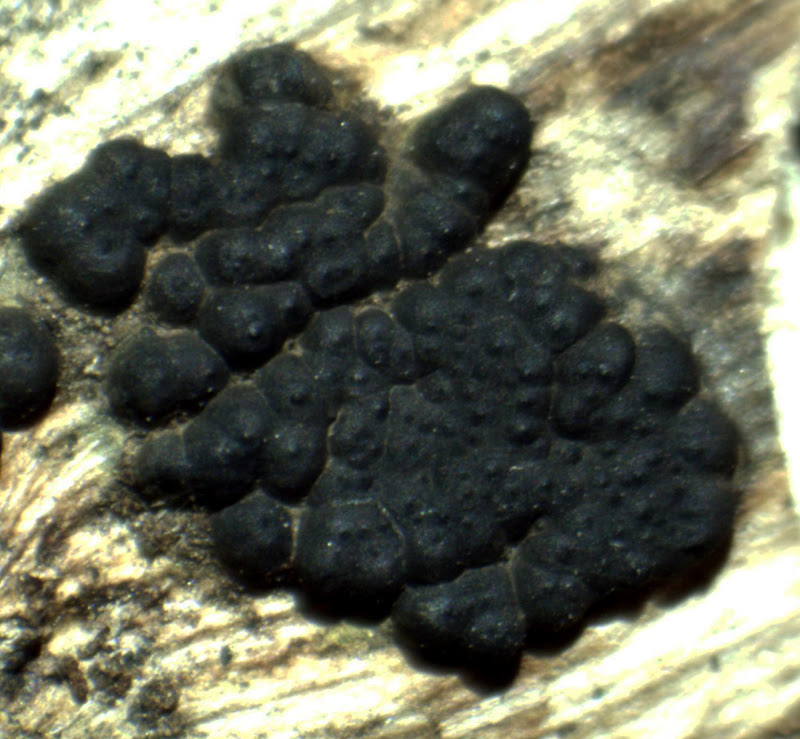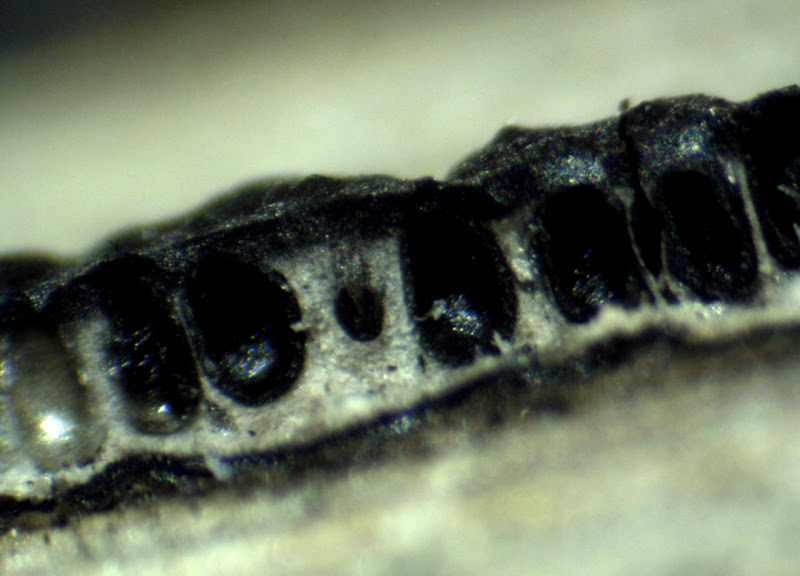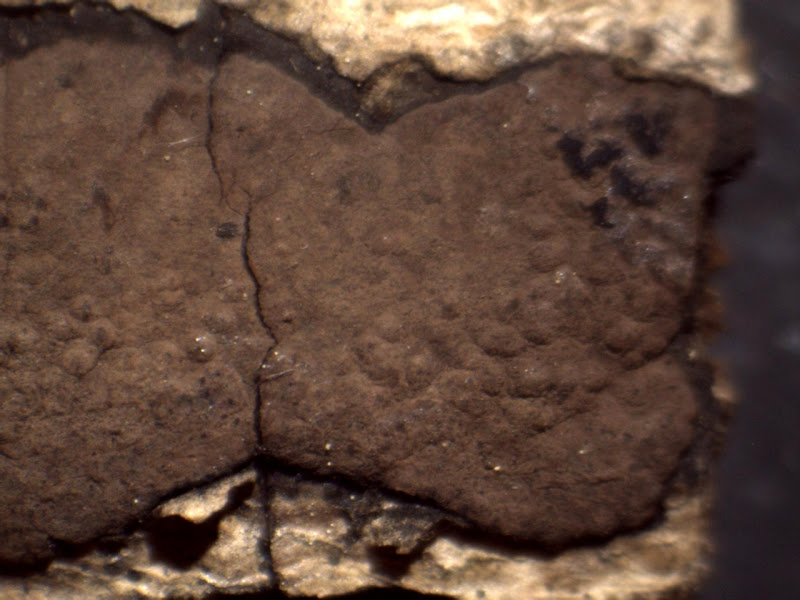
A brown crust fungus, probably an immature specimen of Hypoxylon petriniae, growing on a fallen ash branch (Fraxinus excelsior). The lack of any obvious ostioles is what makes me think this is an immature specimen. I used a razor blade to reveal the perithecia in one corner. These seemed to relatively small and poorly developed:
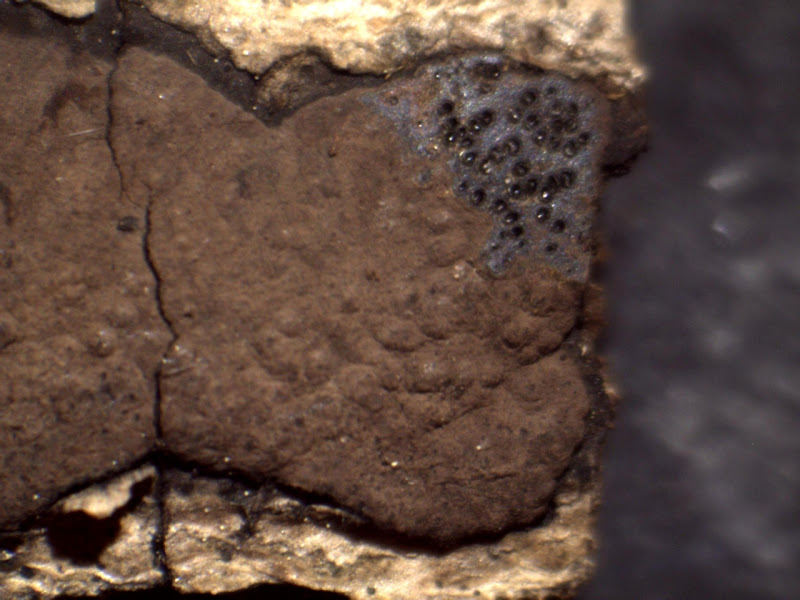
Last month I came across what I think was a mature specimen of the same species growing on the same ash branch. I still had that specimen so I took another look at it, this time through my new stereo microscope with camera. The following image clearly shows the light spots surrounding the ostioles on that specimen:
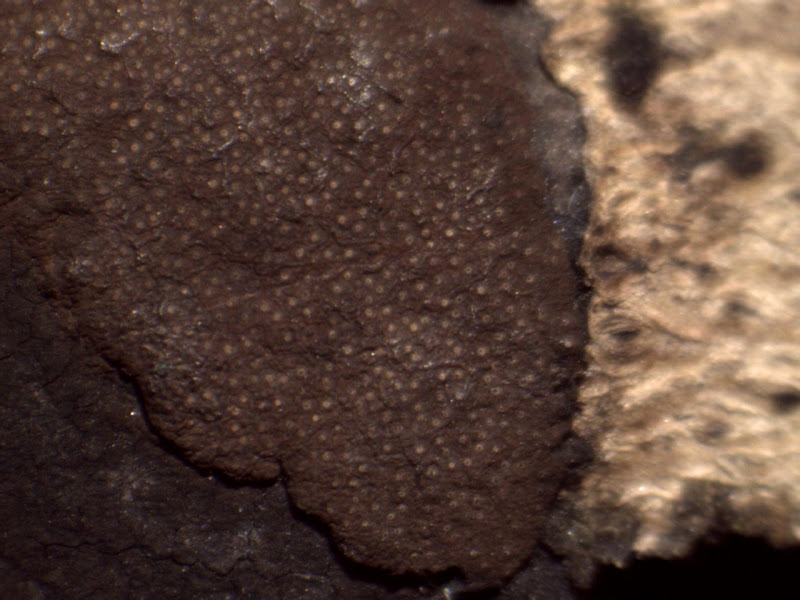
Close up the ostioles are obvious:
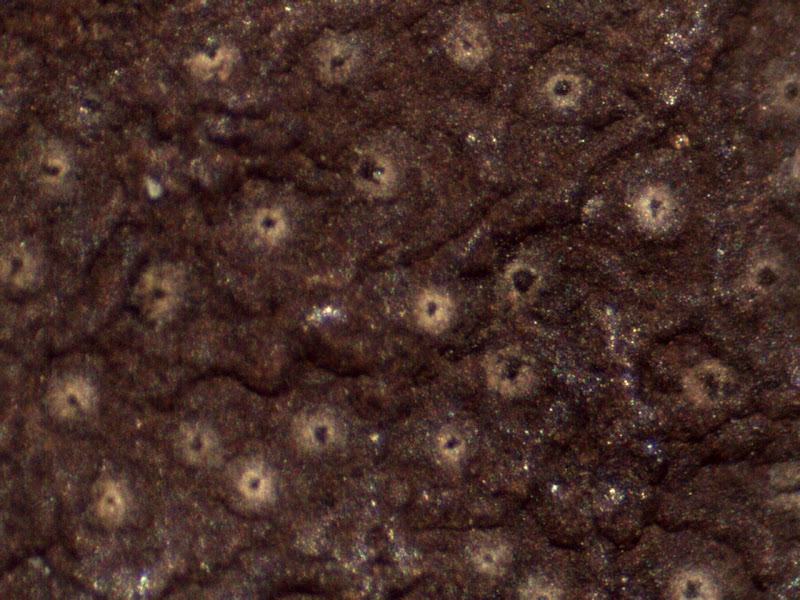
Again I used a razor blade to scrape of the surface to reveal the perithecia. These are clearly larger than those in the immature specimen above:
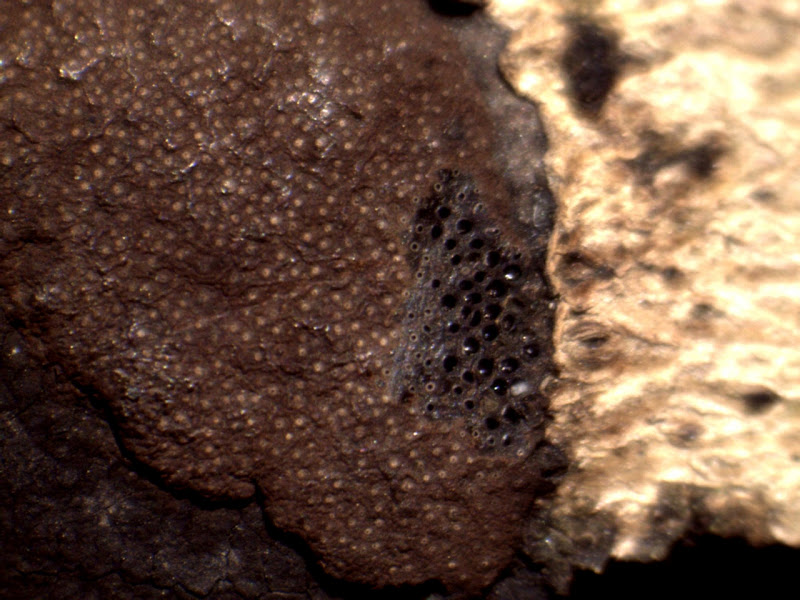
Both specimens taken in Whiteknights Park, Reading, UK; the immature one on 2014-03-15, the mature one on 2014-02-09.
 Mon 2014-03-31
Mon 2014-03-31 

